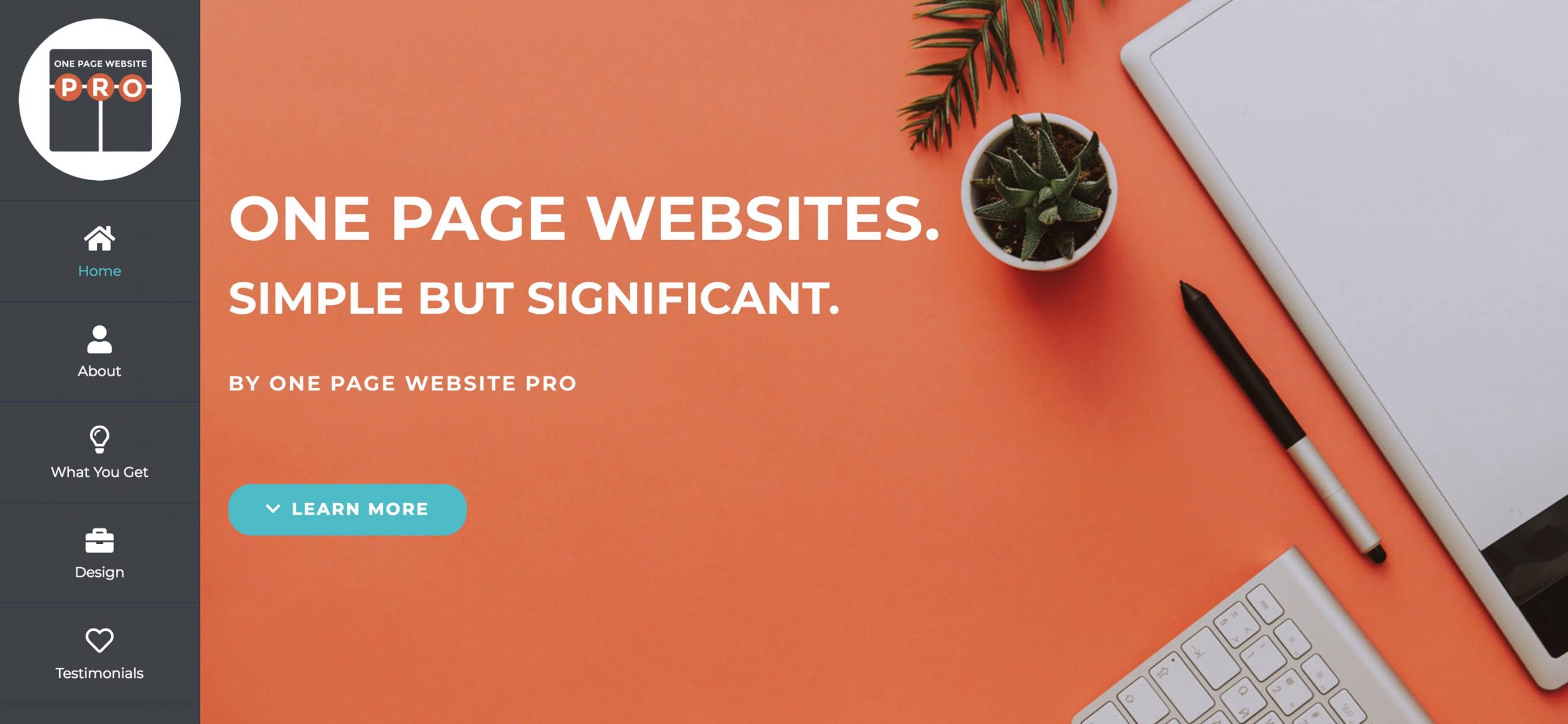In some cases, selecting the preferred thing can be a daunting task. For instance, a choice between a multi-web page and a single-page design can prove difficult. In today’s society, the use of social media platforms and mobile devices is the order of the day. With many people now in need of comprehensible, fast, and responsive solutions, a single-page site would be a suitable solution for meeting their needs. In fact, websites with such a design are now the in-thing.
Even though single webpage sites are currently gaining increased recognition in comparison to multi-page sites, the latter is more trusted and recognized by many users. Thus, deciding between the two website layouts is a daunting task. Despite the predicament, your business still requires a website. So, what do you do? Well, the information below is tailored to assist you in making the best choice.
What does a Single Webpage Layout Entail?
In the case of a single webpage layout, all the web content is found on one page, which is mapped on an effective marketing plan. These sites leverage a blend of codes that work alongside high-dynamic aspects. What’s more, they involve coding languages like Ajax, jQuery, and several others in a bid to complete the website’s functionalities.
In the case of a single webpage layout, navigation tools help in directing you to the desired content section.

What Makes Single Page Sites an Excellent Choice?
Having a clutter-free and easy-to-understand design helps in explaining why many entrepreneurs prefer single webpage sites.
Single webpage layouts feature a small amount of user interface clutter. Also, the web content is broken down into smaller sections, making it understandable to the target audience.
These websites also help in establishing an interactive experience for website visitors or potential customers. Since the website’s layout is pageless, they can quickly scroll down to the bottom of the webpage by merely clicking a given option. What’s more impressive is the manner in which the website’s storyboarding is carried out outstandingly, allowing you to comprehend the entire message from the introduction to the conclusion.
Another good thing about the linear navigation mechanism that comes with single webpage sites is its ability to convert users. In fact, research shows that this website design causes the rate of conversion to increase to an average of (> 37.5 percent) in comparison to multi-page websites.
Additionally, single webpage sites are responsive, a quality that allows them to function exceptionally with mobile. Aside from that, the website’s content is available in smaller portions and can easily be presented on a mobile phone’s screen. Moreover, scrolling up and down on a touchscreen is easy.
What does a Multiple-Page Design Entail?
Alternatively, a multiple-page design is completely different from a single webpage design. In the case of the former, the web content is spread across several pages. This web design is suitable for large corporations and other entities that provide a variety of services. For such businesses, placing all their commodities on one page can subject their audience or potential buyers to a cumbersome scrolling process. What this means is that operating a multiple-page website is a wise choice.
Multiple page sites are highly prevalent on the Internet. Since such sites have been in existence for some time, users who prefer archetypal sites have developed a sense of trust in them.
Why Should You Go for a Multiple-Page Website?
If you opt for multiple-page design, expect the following three key benefits:
Scalability is among the primary benefits associated with a multiple-page design. With this type of website design, you can not only continue to add more pages but also expand your navigation system in an attempt to meet your needs. For instance, you can get rid of the navigation tool operating at the top by replacing it with a menu list, which can be used in redirecting the users or audience to their preferred services.
Another advantage of such websites is the fact that they offer a higher degree of accessibility. With website designing and development dating back as far as the 20th C, users are already well-conversant with this particular design.
Recall, that multiple-page sites are specially designed to adjust to effective search engine optimization (SEO) functionalities. Even though digital marketing is necessary as far as conducting effective search engine optimization is concerned, additional web pages mean better results.
Multiple Page versus Single Page Design
Looking at the above information, I hope by now you can comfortably differentiate between a multiple-page and a single-page website. Check out this debrief in a bid to gain more clarity, especially on the useful web pages for achieving a given purpose.
If your objective of establishing a site is not only narrowing down the target of incoming visitors but also encouraging them to execute a given role like purchasing, subscribing, or donating, then a single webpage site will suit you. Furthermore, the web design is mobile-first, an attribute that allows it to deliver the desired level of exposure.
Nevertheless, in case your objective of designing a website is to represent a whole brand, which provides a broad array of products and multiple services to customers, then you should go for a multiple-page design. A multiple-page website boasts a massive potential when it comes to representing a company. What’s more, the layout still leverages a traditional navigation mechanism across the entire site, which is a useful attribute for your search engine optimization (SEO) plan. Nonetheless, there’s no specific principle that outlines the website solution that will run appropriately when the objective is to present content to your audience.
Using the information outlined above, you can easily distinguish between multiple pages and a single-page website. However, if you are still uncertain about the ideal business solution, do not hesitate to reach out. Aside from helping you know more about both types of website designs; we will assist you in choosing the one that suits the needs of your company or organization.
